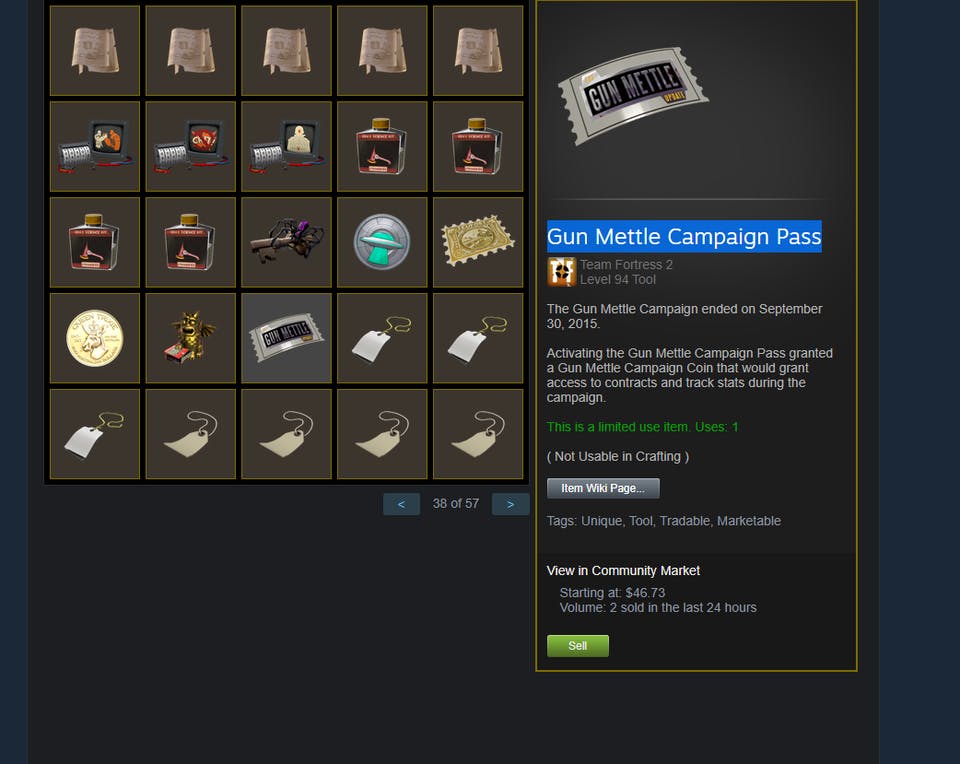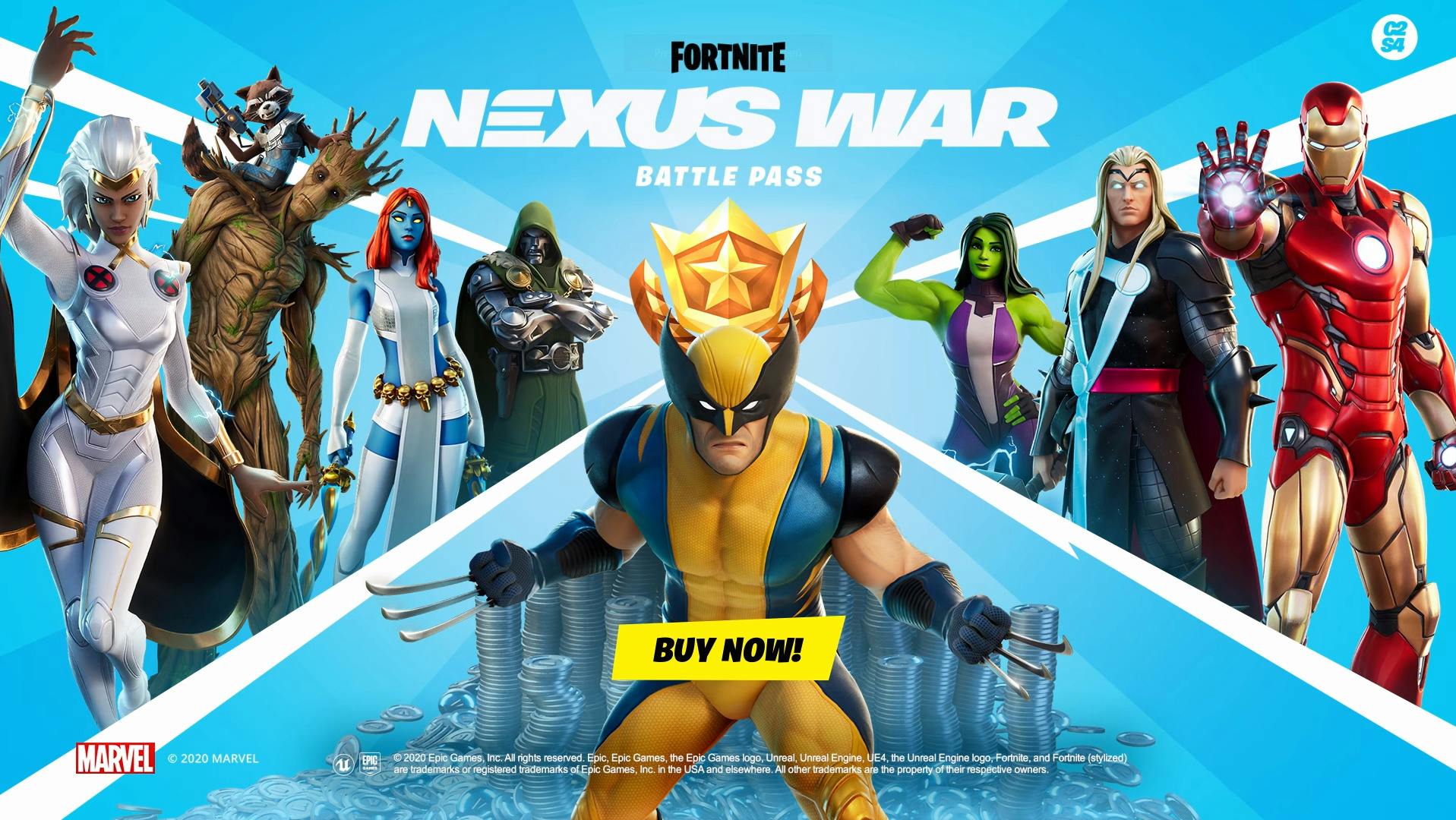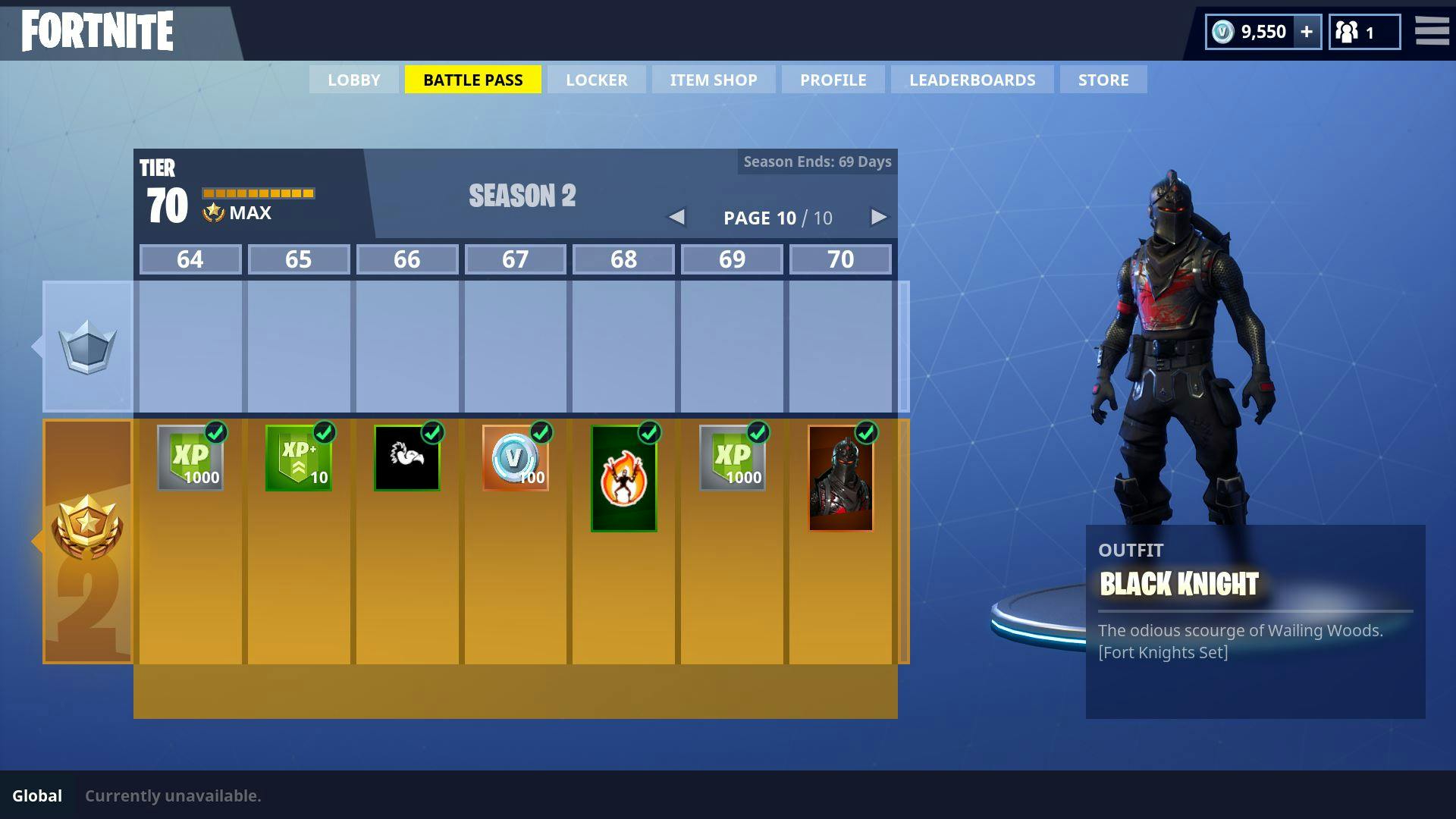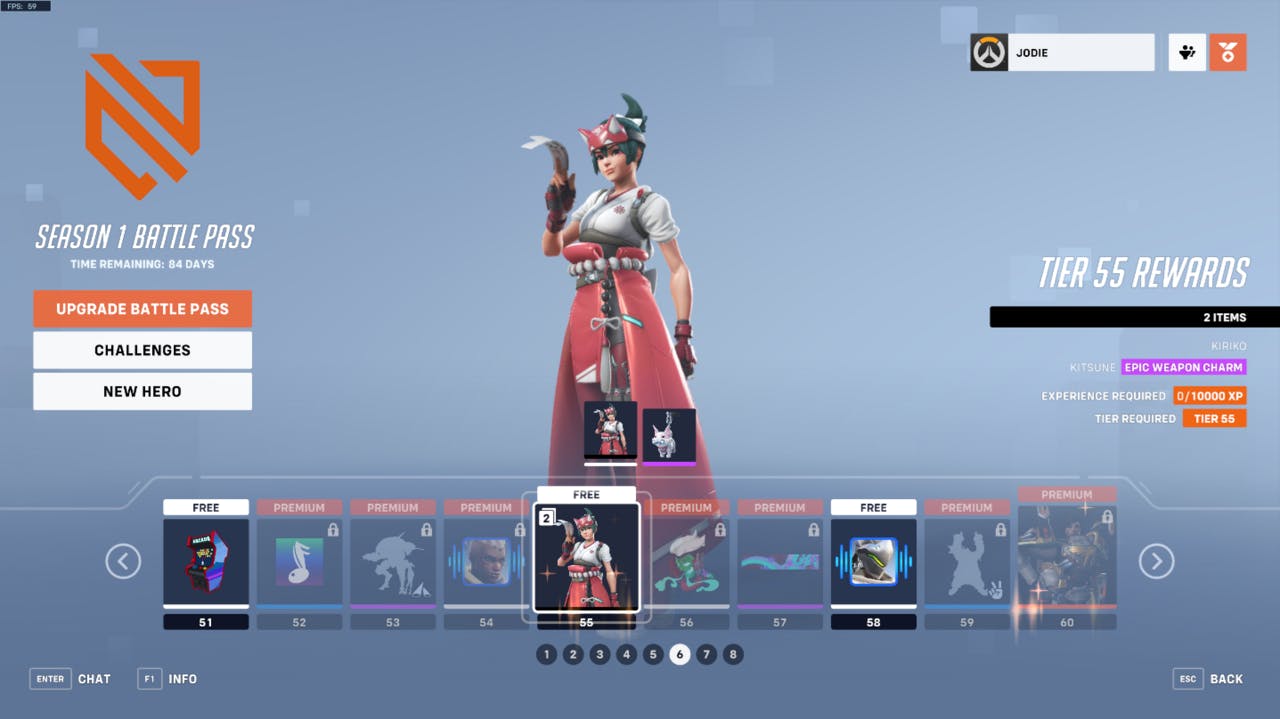Battle passes have spread across the online gaming industry like wildfire for the past five years. For those unfamiliar with the concept, a battle pass is a subscription-like service that allows players to earn content for a game through a tiered reward system. Players are rewarded exclusive in-game items, such as skins to alter the appearance of characters and items and profile avatars, for playing matches in the game, and completing challenges for additional progression points.
As players advance through the tiers, commonly referred to as “levels,” players are rewarded with flashier, more desirable prizes that allow their in-game characters to stand out from the competition. It’s similar to how celebrities would wear increasingly extravagant and expensive outfits to display their wealth or how a peacock shows its colorful plume of feathers in an attempt to attract a mate.

The only difference is that the odds of attracting a mate using one of these “exclusive” virtual skins is significantly more minuscule.
Most passes tend to come with a free version and a “premium” version that players can use with a one-time purchase with the game’s premium virtual currency, often bought using real-world cash. They also tend to be a “seasonal” mechanic, where players have limited time to complete the pass and earn its rewards before it expires.
Opinions on these battle passes are often mixed. Some see it as a way to support the developers of their favorite multiplayer game. Others see them as a disgusting measure taken by a greedy company. I’ve never been a fan of the damn things. But I’m not here to start a rant; that’s what Reddit’s for. I’m here to explain what they are, how they came about, and how they can benefit or harm a game and its community.
How did the battle pass start?
Okay, class, here’s your first question: how did this concept spring into existence?
Many might think that it started with Fortnite in 2018. But this was when it began to grow in popularity.
In reality, one of the first known examples of the battle pass began with Dota 2, made by Valve, during its annual e-sports tournament, The International 2013. Referred to as the “Compendium,” it provided unique in-game content and other features for players that purchased it, with 25% of all revenue from it going to the event’s prize pool.
In 2015, Valve added “campaign passes” to one of their most successful first-person shooters and arguably one of the greatest video games ever created, Team Fortress 2. This pass gave players that purchased it several goals to complete during the event to receive unique customization options.

The Team Fortress 2 “Gun Mettle Campaign Pass” sitting in a Steam user’s inventory.
Are you starting to see where this is going yet?
As I previously mentioned, Epic Games introduced a battle pass in 2018 with Fortnite Battle Royale, which became a great success. While this was happening, the video game industry was busy dealing with the controversy surrounding another significantly less appealing monetization scam scheme, loot boxes. Desperately looking for a way out of the murky swamps of loot box controversy and seeing the success and additional revenue that came with this new battle pass concept, publishers began to think of ways to incorporate it into their current and future projects.
In what games is the battle pass commonly seen today?
Battle passes are often seen in online multiplayer games, usually games that are free to play and fall under the “battle royale” genre. They can also appear in regular “buy-to-play” games featuring a multiplayer element, but this is usually a rare occurrence. While the themes and rewards of the battle passes tend to differ, the core features stay relatively the same.

The Fortnite “Nexus War” Battle Pass featured a Marvel theme.
Players can earn cosmetic rewards for in-game items and characters by earning experience points in multiplayer games, which allow players to progress along the reward tiers. They are also presented with challenges to complete in-game, which nets them even more progression points. A free version and paid version of the battle pass are often available together, with the free pass having a limited number of tiers or less-desirable rewards. The passes and the prizes they offer are only available for a limited time; usually a few months before the “season” ends and a new pass becomes available.
Pros and cons of the battle pass
Regarding battle passes in gaming, opinions within the respective communities are generally mixed. On the one hand, it gives players a way to financially support the developers of the games they enjoy, ensuring they have the resources to continue to add improvements and host the servers for their multiplayer services. It also incentivizes players to continue playing by giving them goals to progress toward. Also, some battle passes allow players to earn back the virtual currency they spent to buy the pass in the first place. This could let them buy the next pass without paying a dime and buy extra goodies from the in-game store.

The top rewards of the Premium Fortnite Battle Pass, shown in gold, feature experience point boosts, impressive skins, and even in-game currency. But it appears as though the free Battle Pass doesn’t offer as much.
On the other hand, battle passes often come with a time limit, usually a few months. Once the pass expires, the players can’t earn any more rewards on the pass. This usually plays a part in sales by creating a fear of missing out on limited-time content. A sizable time investment is often required to earn all the rewards on a single pass. Players usually have to win a few matches a day and complete daily challenges if they hope to finish the pass before the season’s end. This is difficult if players lead busy lives that prohibit them from logging on every day of the week. However, some companies offer microtransactions, purchases made in the in-game store, that briefly multiply the number of progression points they can earn in-game or just instantly brings them up to a specific tier of the pass. These purchases are often a red flag to most gamers, as they indicate that the company seeks to make additional revenue off those who have a life outside of the game.
In addition, some of the prizes offered by the premium battle pass are not only more aesthetically pleasing than the ones in the free pass, but they can also provide unfair advantages over other players. In one such case, each new battle pass in Overwatch 2 features a new playable hero added to their roster. However, if you want to use them immediately, you must fork over $10 for the premium battle pass. Otherwise, you needed to grind through half of the battle pass before unlocking that new character.
This raised a bit of a stink among the community in the weeks leading up to the game’s release.

Overwatch 2 players who didn’t purchase the Season 1 Battle Pass needed to reach level 55 before they could play as Kiriko.
Considering that the first Overwatch gave players access to new characters for free, many considered this to be a slap to the face. But aside from that, this also strained team builds and strategies. If one of the new characters could effectively counter the abilities of members of the opponent’s team, you’d better hope someone on your team forked over the $10 for the battle pass, or else you’ll be up a creek with no paddle.
Is there a better way to handle Battle Passes?
While the battle pass formula hasn’t changed much since its conception, some publishers are taking approaches that are more appealing to the player base. For example, Halo: Infinite, made by 343 Industries, features battle passes that do not expire after players buy them. Whenever a new multiplayer season is released, a new battle pass is released alongside it. However, players can commit the experience points gained in multiplayer to any battle pass they own. This approach frees players of the time constraints that typically come with a battle pass.
Another unique approach to the battle pass can be seen in Deep Rock Galactic, a four-player co-op game made by Ghost Ship Games. Each season brings a new battle pass, called a Performance Pass, which is entirely free. That’s right. No premium version has to be bought separately to earn the best rewards! When the season ends, all the cosmetic items featured in the pass are added to the game’s loot pool. This allows players to find them in crates buried in the game world during missions.
So, if publishers care about a thriving player base and are willing to try something new, there are much better ways to handle a battle pass.
The Takeaway
Given the success and popularity of the battle pass system, especially in comparison to the old system of gambling with loot boxes, I don’t think it’s going away any time soon. It’s a reliable way for publishers to make revenue from free-to-play games. However, if the progression is too slow or demanding, or if rewards from the premium passes grant some competitive advantage over others, then they should expect a significant portion of their player base to walk away upset. Worse still, the game may get branded by critics with the dreaded label of a “pay-to-win” game.
Fortunately, a few companies are daring to try new approaches to address this issue and make passes that allow players to continue earning rewards after a season ends. Suppose AAA game publishers like EA note these approaches and adopt them in future multiplayer titles. In that case, they may see an increase in the longevity of said titles and a positive boost in their public imagery. It would also be a sure sign of the Apocalypse, as big-name publishers have repeatedly demonstrated that they are more interested in the profits they can make than what the public thinks of them. No, we’re more likely to see such forward-thinking in smaller teams of indie developers, who have proven to be more passionate about their projects and care about the communities that support them.
This article was originally published by The Truthful Gamer on Hackernoon.











